Botanical gardens are zoos for plants; places where plants from around the world are conserved. Frequently they are public but they do not have to be. Frequently also the staff conduct research on topics relating to plant propagation and identification.
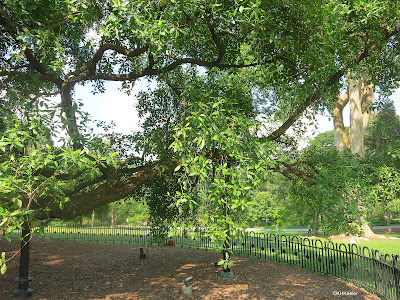 |
| Singapore Botanic Garden |
Cities and universities often have botanical gardens. In a new areas, I like to visit botanical gardens.
One of the strengths of botanical gardens is that they label the plants. Learning more plants, beginning with their names and going on to their ecology, can be difficult. Many places do not have thorough plant identifcation guides and cultivated plants are often omitted. Labeled plants are really helpful. But few places, at least in the United States, put labels on plants, so botanical gardens are wonderful resources for learning to identify plants.
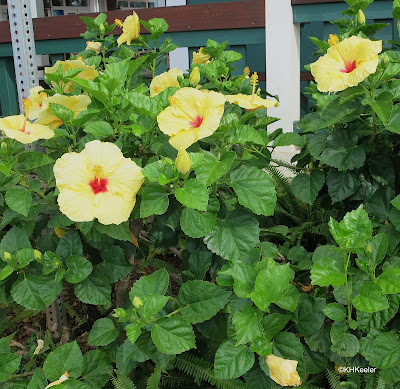 |
| "Looks like an hibiscus." Label: Hibiscus rosa-sinensis Malvaceae, from Asia |
Keeping those name labels properly associated with the plant is more of a challenge than it seems. Big botanical gardens have thousands of labels. Plants die, orphaning the label. Plants spread, so that visitors may see the unlabeled part of the plant. Other plants may grow in between the label and its plant, confusing visitors. You have to alert, if you want to learn from botanical garden labels. Its easy when you are looking at a clump grass and the sign says its a juniper. Its not so easy when neither the actual plant nor the plant named by the label are familiar to you.
 |
| This one is pretty easy: a juniper is an evergreen conifer, the label is not for the visible plants |
(These days you can take a photo of the plant and ask the internet or an ap what the name is. You still have to be wary. The internet or ap often names the most likely plant for the area. The botanical garden may have intentionally planted a rare plant or a plant from half the world away, in which case the internet or ap id is likely to be wrong. Furthermore, many plants need characters for identification that the easy photograph doesn't pick up, like tiny hairs on the stem or the details of the seed.)
When traveling, I am interested in the plants of the area I am visiting. Despite the naming, botanical gardens can be difficult for that goal, because most are primarily for local people and what local people want to see are strange plants from across the world. Growing local wildflowers is a low priority for most moderate sized botanical gardens. That may be changing, as local wildflowers become rare and gardeners want to grow them. Big botanical gardens, like the United States Botanic Garden on the Washington Mall, have for years grown natives. They encompass diverse ecosystems, so expect their visitors to have seen some of the plants of their large region, but not all.
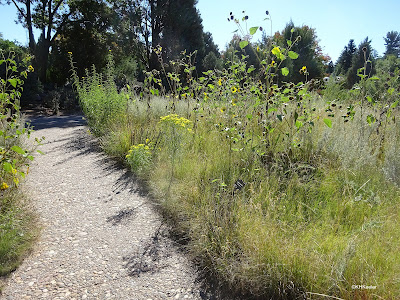 |
| prairie display, Denver Botanic Garden, Denver Colorado; plants of the grasslands near Denver |
 |
| Display of southeastern U.S. plants at the United States Botanic Garden, Washington, D.C. |
Growing plants from all over the world in one place is difficult. You can amend the soil or water heavily for plants requiring extra water. Keeping it dry enough to grow cacti in the tropics is not so easy. The Singapore Botanic Garden put a roof over the desert collection, to keep the rain off.
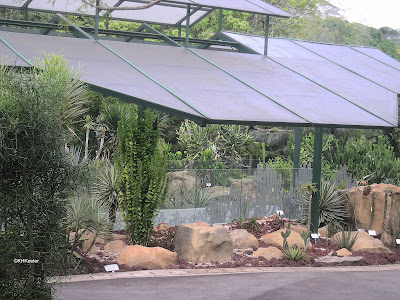 |
| Cactus house, Singapore Botanic Gardens |
For tropical plants in temperate regions, one needs a greenhouse, with adequate heating and light during the winter. This works well for small plants like orchids and bromeliads, but it is more of a challenge for tropical trees that can grow to 100' or more. None of the options--build a really big structure, cut the plants back, rotate in seedlings every decade or two--is all that easy or cheap.
The list goes on. Plants have regional distributions because the environmental conditions they require are not found everywhere. Botanical gardens are a dramatic example of humans searching to circumvent nature's rules.
One thing botanical gardens are great at is growing iconic plants that you might not otherwise be able to see. Coastal redwoods (Sequoia sempervirens), native only to a limited section of California, can be seen in botanical all across Europe. The giant water lily Victoria amazonica, from remote areas in South America, with one of the world's largest leaves, is grown at the Denver Botanic Garden every summer. Or just plants from difficult to reach ecosystems, like mountain avens, Dryas octopetala, a famous climate indicator used by paleontologists which I had read about but not seen because it grows in the high arctic or very high in the mountains.
 |
| Amazon water lily leaf, Denver Botanic Garden, Denver, Colorado This is June, this leaf will be at least twice this size by September. |
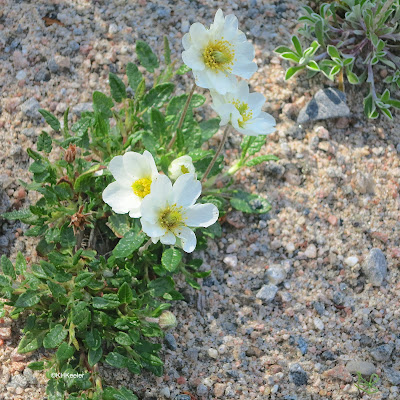 |
| Dryas octopetala, mountain avens, a high arctic plant growing in the Gothenburg Botanic Garden, Stockholm |
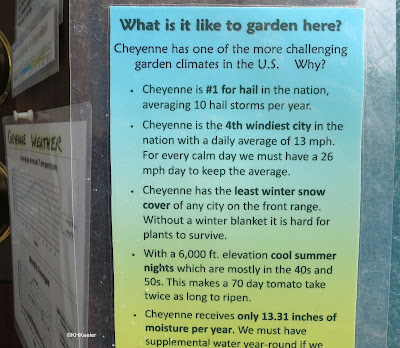 |
| Sign at the Cheyenne Botanic Gardens, Cheyenne, Wyoming |
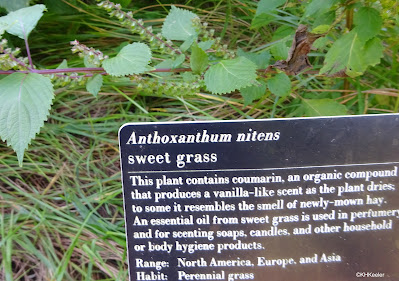 |
| Sweet grass sign, United States Botanic Garden (the grass is below, not the serrated-leaf plant photobombing me). |
No comments:
Post a Comment